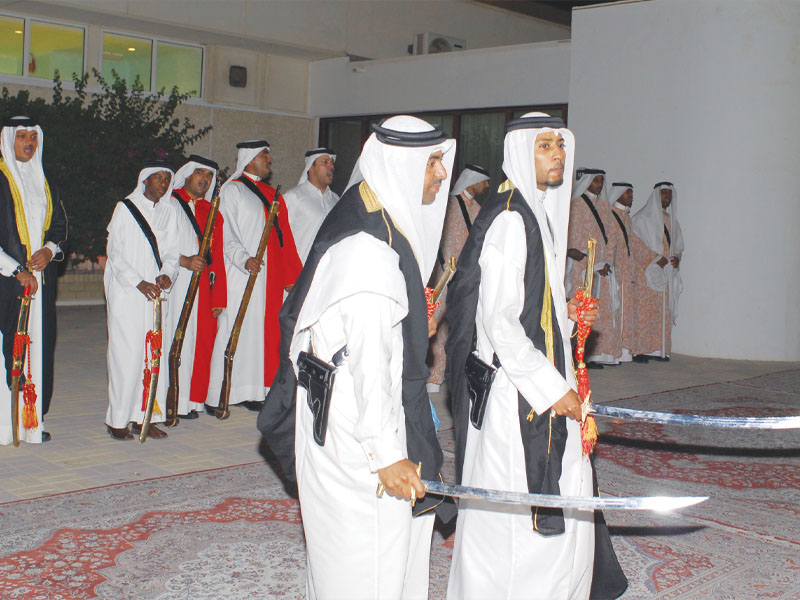Ardah folk dance
Issue 27

Ardah, a type of folk dance that functions as a display of power, has long been popular in the Arabian Peninsula. The dance has been celebrated in numerous Arabic poems. Ardah is derived from an Arabic word that refers to the march of a huge army and soldiers gathering in preparation for war. When a country or tribe is under threat, the Ardah is performed to prepare the members of the tribe for battle.

In the past, Ardah preparations included training in the use of swords and shields.
An ancient folk art that was performed before and after battles, Ardah showcases the power of the men of the Arabian Gulf.
It is said that Ardah originated in Najd, and that it was exclusive to the well-known Anza tribes from which the ruling families of the Gulf – including Al Khalifa, Al Sabah and Al Saud – descend. Roaming tribes led Ardah to spread throughout the Arabian Gulf. In Bahrain, Kuwait and Qatar, the dance is known as Ardah, in Saudi Arabia, it is called Najdi Ardah, and in Hijaz and the South, where it is characterised by fast rhythms, it is called Southern Ardah. In the UAE, the dance is referred to as Al Ayyalah and Al Razif, which was its old name in Bahrain. In Oman, it is known as Al Razfa.
Ardah is performed by two lines of dancers, (Al Shayyalah), which face each other. A man recites verses to both lines, and the dancers repeat the verses after him. Musicians stand behind the dancers. They usually play tambourines and drums, but the instruments can vary according to the musicians’ place of origin. There is a line of men holding guns, and the men who perform with swords stand in the middle.
KHALED Khalifa
Bahrain







































































